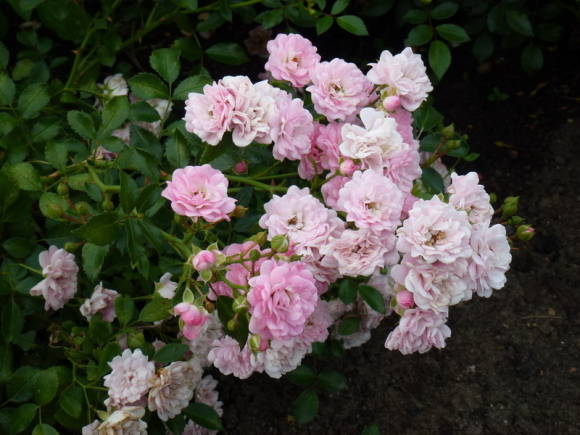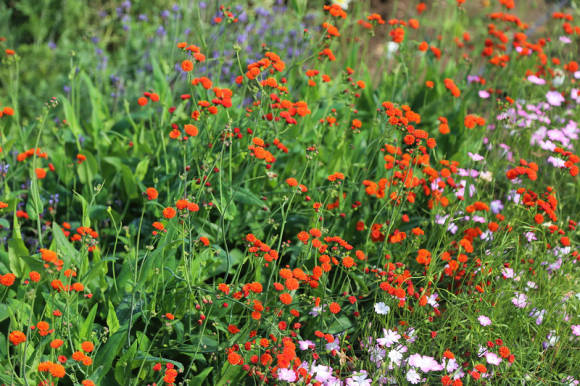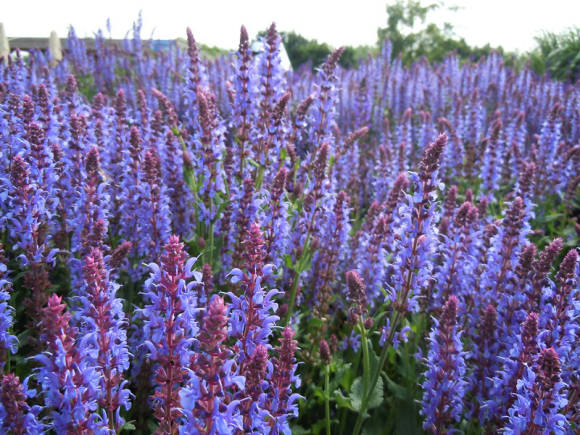
As you know, park roses can be propagated by rooting green cuttings. Not always and not everyone does it well. We offer a technique for propagating roses by green cuttings, it is quite effective, not complicated and inexpensive.
This method of propagation is suitable, first of all, for small-leaved roses - polyanthus, miniature, patios, rose hips, small-flowered climbing, ground cover and park roses, which are varietal rose hips.

So, first of all, you need cleanliness, so before you start cutting cuttings of roses, the pruner should be sharpened well, cleaned of dirt and wiped with a cloth soaked in alcohol.

Cuttings are best cut in June and early July from those shoots that have flowers or from those on which the flowers have just wilted, that is, have faded. Cuttings are best rooted from the upper part of the shoot - the lower, the less plastic substances in the shoots, therefore, they will take root worse or do not form full-fledged roots at all, but will form only callus.
Cuttings should be made 12-15 cm long, no more, and choose those that are equal to the thickness of a simple pencil, neither thicker nor thinner, it is advisable not to cut, rooting will be worse and the roots will be less. Be sure to leave a couple of leaves on the top of each cutting, remove the rest, they will not be of any use, they will only lead to excessive transpiration and rapid drying of the cutting in the event of a lack of moisture in the soil and air. After the cuttings are cut, place them in water for a day with any growth stimulant dissolved in it - Zircon, Heteroauxin, BCI or others. After this period of time, the cuts at the base of the cutting, before planting, need to be updated, for which the pruner cut off about 1 cm of the cutting. It is great if the lower cut is oblique and made just above the kidney, as well as the upper one. The lower oblique cut on the cuttings will allow it to be buried in the ground as efficiently as possible, and the oblique cut at the top of the cuttings will not allow water to accumulate, otherwise rot may appear.
It is best to plant cuttings in the greenhouse as early as possible in the morning. During this period, it is quite cool in the greenhouse, then the temperature will gradually rise and the cuttings will have time to adapt to this. If you plant the cuttings in a greenhouse in the daytime, when it is hot enough in it, then the leaves may begin to fade from heatstroke, and even if the turgor recovers over time, rooting will still be worse or the cuttings will not take root at all. Planting in the evening, on the other hand, can cause a reverse shock - at night it can be cold in the greenhouse, the cuttings will not be able to absorb moisture from the soil and the negative effect will be the same as when planting during the day, that is, the leaves can fade.
By the way, about the greenhouse. For rose seedlings, it must be prepared in a special way and very carefully. To do this, in the place where the greenhouse will be located, it is necessary to dig a hole with a depth equal to the bayonet of the shovel and an area equal to the area of the greenhouse. At the base of the hole, drainage should be put in a layer of 1 cm, it can be broken brick, expanded clay, pebbles, etc. The second layer must be made of humus with the addition of nitroammophoska (a tablespoon for 5 kg of humus), the third layer is a mixture of river sand and humus in equal proportions, and, finally, the fourth layer is river sand, it should be 2- 3 cm. It is in the layer of river sand that the cuttings are buried.
After planting, it is important to ensure that the greenhouse is hermetically closed, drafts are unacceptable. In order for the cuttings to root well, watering must be done often - on hot days, every hour, starting at eight in the morning and ending at six in the evening, on cloudy days - after 2 hours, starting at 9 am and ending at 5 pm. For irrigation, you need to use water at room temperature, you cannot use cold water.
It's great if you can set up automatic watering. This is not difficult to do.The easiest way is to install a barrel with a minimum volume of 200 liters, paint it black, place a water pump in the barrel and lead the water pipe out to the greenhouse, supplying it with sprinklers (usually fokers). At the break, between the greenhouse and the barrel, it is advisable to set a timer that will turn on the pump and regulate the water pressure after a specified time. So you free yourself completely, you only need to monitor the growth of weeds, removing them from time to time.

Usually closer to September, when planting cuttings in early summer, roots are formed on them. In order not to injure the plants, they can not be transplanted from the greenhouse in the fall, but left there to winter until spring, only it is imperative to remove the shelter from the greenhouse, otherwise the cuttings not covered with snow may freeze in winter. If the winters in your region are cold, then it is advisable to cover the cuttings with dry leaves, and so that the foliage does not scatter around the site, put spruce paws on top.
In spring, cuttings can be dug out of the greenhouse and planted in a permanent place, or they can be grown for another season in a bed with nutritious and loose soil.
Rooting of cuttings of roses in this way often reaches 100%, but remember that self-rooted plants obtained in this way are usually weaker in winter hardiness and necessarily require shelter for the winter.
Read also the article Green cuttings of woody plants.
The scheme of cutting and rooting of cuttings of roses - from the book: S.A. Izhevsky. Roses. - M., 1958









